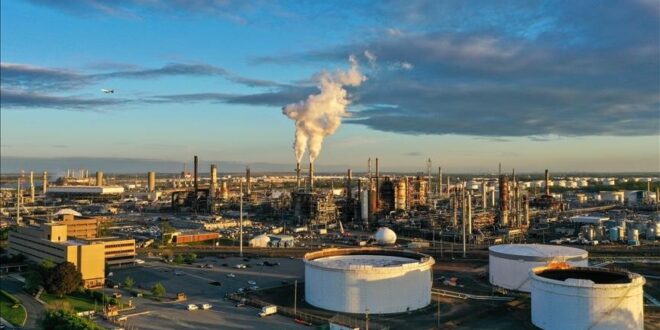Oil prices hit multi-month highs to snap a two-week losing run amid expectations of further supply cuts by Opec+ members.
Brent, the benchmark for two thirds of the world’s oil, rose 1.98 per cent, or $1.72, to settle at $88.55 a barrel. It hit a session high of $88.75, its highest since January.
West Texas Intermediate, the gauge that tracks US crude, jumped 2.3 per cent, or 1.92, to close at $85.55 a barrel. It rose to as much as $85.81, its best level since November.
For the week, Brent gained 4.8 per cent, the most since late July, while WTI added by 7.2 per cent, the highest since March. Year-to-date, the benchmarks are up 3.1 and 6.6 per cent, respectively.
“Brent peaked near $88 a few weeks ago and bottomed around $82 last week as we await more direction on the economy and therefore demand,” said Craig Erlam, senior market analyst at Oanda.
Analysts expect Saudi Arabia’s voluntary production cut of one million barrels per day to be extended into October.
“We continue to think Saudi Arabia will reduce the cut only when it believes the oil market is stable enough to warrant it,” said Giovanni Staunovo, strategist at UBS.
“Considering Opec+’s cautious, proactive and pre-emptive approach to achieving a stable oil market, the voluntary cut could remain in place given concerns about China’s recovery.”
The kingdom’s crude exports stood at 5.47 million barrels per day in the first 27 days of August, the lowest level since April 2021, the Swiss lender said, quoting Petro-Logistics data.
UBS, which expects Brent to rise to $95 a barrel by the end of 2023, repeated its “positive outlook” for the oil market.
MUFG, Japan’s largest lender, expects Riyadh’s production cut to continue “at least for another month” as Iran and Venezuela increase exports.
The bank has maintained its “range-bound” oil price forecasts, citing bearish risks such as robust oil supply and higher realised crude stocks in the Organisation for Economic Co-operation and Development countries.
Crude is prone to price gains amid a potential US Federal Reserve interest rate pause, slowing US economy, a weaker dollar and policy easing in China, the bank said.
Russia has also indicated that it may continue its voluntary cut on crude exports until next month.
“We are currently monitoring the situation, estimating the market together with our colleagues from other countries. We will rely on the market’s requirements,” Russia’s Deputy Prime Minister Alexander Novak was quoted as saying on Wednesday by state news agency Tass.
Russia, which has pledged to reduce its production by 500,000 bpd until the end of 2024, is expected to lower its exports by 300,000 bpd this month.
Meanwhile, in the US, an inflation metric closely monitored by the US Federal Reserve rose slightly in July, adding to expectations that the central bank will leave interest rates unchanged when it meets in September.
The Personal Consumption Expenditures Price Index increased 0.2 per cent last month, data from the Labour Department showed. Core PCE inflation – which excludes food and energy – also increased by 0.2 per cent.
At the Jackson Hole Symposium in Wyoming last week, Fed chairman Jerome Powell said the central bank would continue to aim to bring inflation down to 2 per cent.
The US economy is not cooling as expected, with stronger-than-anticipated gross domestic product growth and “especially robust” consumer spending, he said.
China, the world’s second-largest economy and top crude importer, has announced more stimulus measures to revive growth.
The country’s central bank will cut the amount of foreign exchange that financial institutions must hold as reserves, as a measure to support the yuan.
The People’s Bank of China on Friday said it would cut the foreign exchange reserve requirement ratio by 200 basis points to 4 per cent starting mid-September.
Factory activity in China recorded an unexpected expansion last month on higher output and firmer market demand, a private survey showed.
The Caixin/S&P Purchasing Managers’ Index rose to 51.0 in August, from 49.2 in July, the highest reading since February.
The neutral 50-point mark separates expansion from contraction.

 Iran Energy News Oil, Gas, Petrochemical and Energy Field Specialized Channel
Iran Energy News Oil, Gas, Petrochemical and Energy Field Specialized Channel



